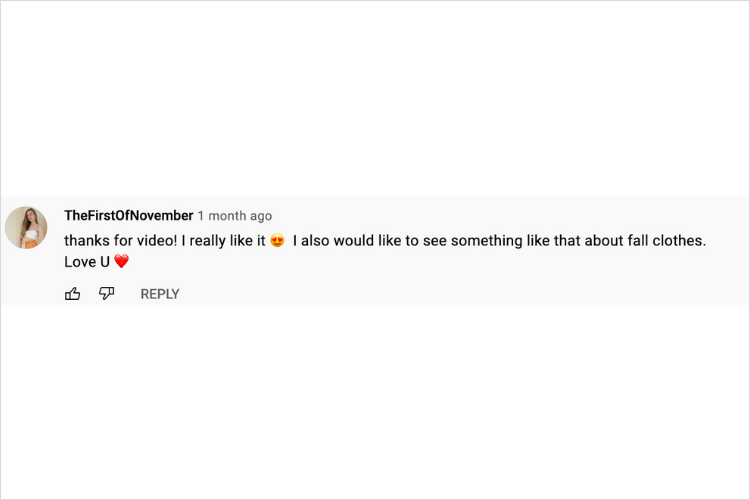With over 4M followers across her social platforms, Valeria Lipovetsky knows a thing or two about creating viral video content.
From Instagram to YouTube and TikTok, the Toronto-based influencer has built a brand that people seriously tune into.
Luckily, we got a chance to sit down with the content queen at LaterCon where she shared her top tips and tricks to garner tons of clicks – no matter the platform!
PS: Keep scrolling to watch Valeria’s session below:
Tip #1: Find Inspiration in the Comments Section
If you want to create viral short-form content, you have to learn what your audience really has an appetite for.
Valeria suggests taking a peek at your comments section.
Oftentimes you can catch the content creator going through her YouTube comment section to find inspiration for her next viral video series or uncovering what type of posts her audience values most.
“I go through the comments to see specific moments people were attached to. That’s an indication that a piece of content resonated with people and can stand on its own,” shares Valeria.

For example, if you share fashion content (like Valeria) and notice users asking for fall styling recommendations, a video highlighting chic fall staples might be the ticket to your next viral video success.
Think of the comments section as your very own focus group. A space to check out what users are most engaged with, and help inform and inspire your next piece of content.
TIP: If your comment section isn’t bumping just yet, that’s okay. Look through your DMs or customer emails to pull content ideas.
Tip #2: Stay on Top of Trends
Whether it’s dances, music, or challenges, following trends are a major part of creating viral short-form content.
And while it seems like every day there’s a new app, trend, or announcement in the world of creative content, being immersed in the social media landscape is key.
That way you can better identify and adapt to trends when they first emerge and put them into play to fit your brand or business.
“Part of a content creator’s job is to be on top of knowing which new features and platforms are coming out,” says the mom of three.
Take TikTok for instance, because the app moves so quickly – turning out snappy, viral videos by the second – it’s a great space to discover trending sounds, transitions and so much more.
Use it as a means of inspiration for your content, so that your short-form video stands a chance at going viral too.
TIP: TikTok’s explore page is your best friend – it’s full of trending hashtags, music, and challenges. Give it a scroll to find your next post!
Ready to start scheduling your Instagram and Facebook posts with Later? Sign up today – it's free!
Tip #3: Get Face-to-face with Your Audience
Don’t be shy! The best way to connect with your audience is by being face-to-face.
Your followers want to feel a genuine connection and getting front and center on your TikToks and Reels can create a real sense of community with your audience.
“I always recommend as many in-person, face-to-face video content as possible – it’s way more informal and feels as if your followers are going through your day with you. And that has real power when it comes to building a community,” notes Valeria.
Showcase your personality (quirks and all!) with your audience – whether you’re answering questions via a TikTok Live or speaking directly to your audience through Instagram Reels.
Trust us (and Valeria), seeing a familiar face on social media can instantly stop a scroll in its tracks!
Want to learn even more viral video tips from Valeria? Catch her full LaterCon session below:




